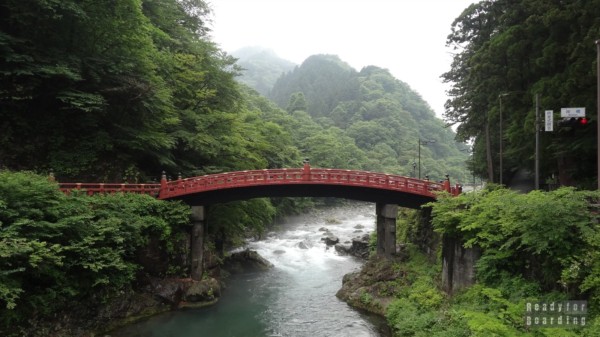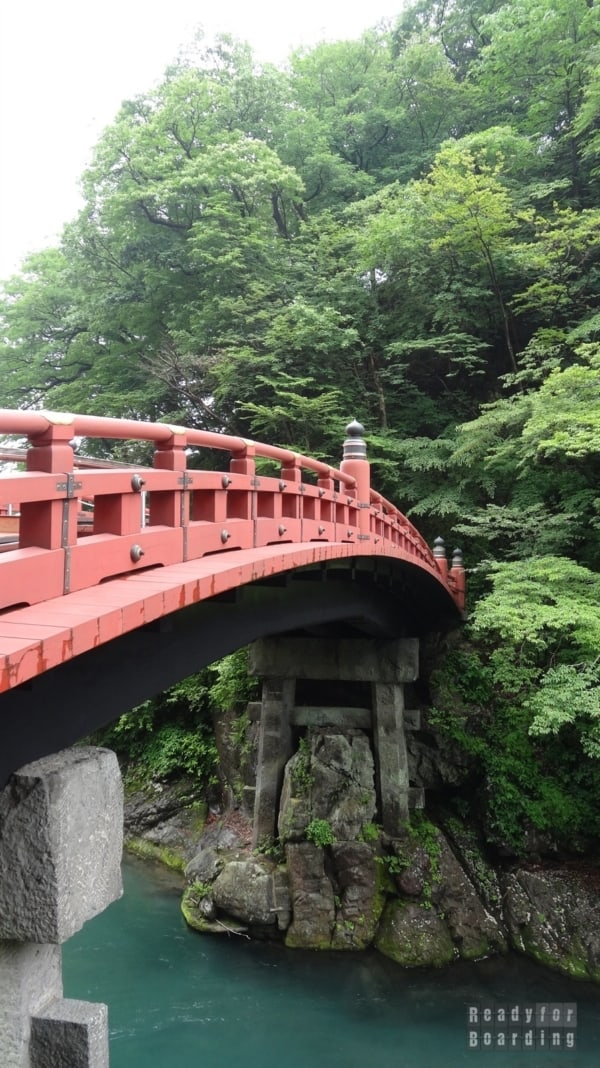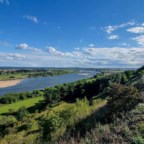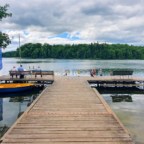Welcome to the post where you will read about our first ride on the Shinkansen (i.e., super fast train), the small town of Nikko and the best ramen soup.
Table of contents
Everyday life in Tokyo
But before we embark on our journey, a few more words about daily life in Tokyo. We mentioned how every free piece of space (both public and private) is used. At first we couldn’t get used to the cramped hotel room, but it was only meant to serve us as an overnight stay, so there’s nothing to complain about.
Waking up in the morning, however, we wanted to experience some fresh air. However, here is what was waiting for us outside the window:
Of course, it was not our first day at the hotel, but somehow it was either dark beforehand or we were too distracted by other things to look closely at what was outside the window. We knew there was a building because in the evenings, we could see people in suits sitting at computers in the windows (and it was about 8 pm), but we didn’t expect that the outside staircase was about 2 meters away from our hotel. Well, ot full use of space :)
We set off for Tokyo’s main train station, from where we were to travel to Nikko. It was early in the morning and on the streets, instead of people heading to work, we were more likely to pass groups of students going to school. They were dressed almost all identically, and only the colors of their backpacks distinguished them. Lovely view :)
However, let’s return to the topic…
Shinkansen trip to Nikko
The time has finally come to take advantage of the JR Pass!(You can find all the information about the JRP in this post.) Our first destination was Nikko, a town near Tokyo.
The first trip on the Shinkansen(in English it sounds better: Bullet train), although short, is still impressive (by the way, compared to the PKP it’s all very impressive). It’s a good idea to reserve a seat in advance, but to do so you have to go to the station and pick up a seat (with the JR Pass, reservations are free). Of course, travel options to Nikko are plentiful, but if you already have a JR Pass then high-speed trains are by far the best option.
The signage at Tokyo Station alone makes it quite easy to understand where to go for a particular train. There are always special platforms (and sometimes even stations) for Shinkansen. If we have a reservation, the signs will also tell us exactly where to stand so that the door to a particular carriage stops right in front of us. Of course, I don’t think I need to mention the now famous queues and the Japanese people humbly waiting to be seated? :) Everything perfectly planned, arranged until it hurts, no one is pushing, no one is squeezing in.
At first, the information boards at the booking office may seem heavily illegible and incomprehensible to foreigners. However, a moment’s association of a few facts allowed us to quickly grasp and correctly read the information.
And what is it like inside the train? Comfortable seats, clean restrooms and, of course, vending machines, vending machines everywhere. Every now and then a conductor would pass us, always bowing at the door toward the passengers.
When disembarking from the train, a staff person was waiting at the exit with a garbage bag, also bowing to all passengers. At every turn you can see what respect the Japanese have for their work: no one complains, everyone does what they have to do with the utmost care.
We took the Shinkansen train to Utsunomiya Station from where we changed to a more local train directly to Nikko called the JR Nikko Line. Here the craze is not – just such a suburban metro ;)
We must also add that the famous punctuality of Japanese trains can be put between fairy tales. The fact is that they are late. Even Shinkansen.
Sightseeing in Nikko
In Nikko, right next to the station there is a bus stop from where you can directly reach the most important place, the Tōshō-gū chram. We, however, recommend walking the streets of Nikko. It’s about a 20-minute walk, and along the way you can see plenty of traditional Japanese homes, which may not reek of beauty, but we were able to get a glimpse of what life is like outside of Tokyo. Also on the way there is a very interesting pub recommended by the guide, but about that later.
After a short walk, we passed a red bridge – Shin-kyo – on our left, which is a passageway to the area of temples and chrams.
After the bridge, we faced another bit of uphill and finally reached the buildings, including the tourist information center. Unfortunately, it turned out that the impressive Rinnoji Buddhist Temple is under renovation until 2020. (!!!). Interestingly, the Japanese have erected a large hall that completely covers the temple, and on top of that they have covered the wall of the hall with an image of the temple so that we can imagine what it looks like. Nevertheless, it is possible to go inside the temple, although here too there were restrictions on visiting, and we don’t quite know what was a conscious arrangement due to the renovation and what wasn’t (of course, one enters the temple without shoes).
Fortunately, this is not the only temple in the area, so we still bought a ticket and went to explore the entire complex. And there is plenty to explore, as the area where the temples and chrams are located is quite sizable – it has approx. 80,000. square meters.
Moving on, we enter the Tōshō-gū Shintoist chram complex . Although it is a chram, inside there are many references to Buddhism – a good example of the intertwining of two religions within one complex (the Japanese have no problem with this at all). The complex is a UNESCO World Heritage Site, and the chram is the resting place of Tokugawa Ieyasu. The buildings are located in the forest, so it is peaceful and quiet here.
Among the most interesting structures are the five-story pagoda and Yōmei-mon gate (Sunlight Gate), which with its golden ornaments and downright overwhelming roof does not fit in with the modest wooden buildings.
The Honjido Hall is worth a look, with demonstrations showing the acoustic properties of the temple.
While at the complex, we looked for the famous sculpture (or rather, bas-relief) depicting 3 wise monkeys with their ears, eyes and mouths covered (“see no evil, hear no evil, speak no evil”). To be honest, you may not notice them and they are nothing like the monkeys that are in many of the pictures and sculptures available with us. Here’s what they look like in the original:
Next to it is another interesting bas-relief depicting something in the likeness of an elephant. A related story tells of an author who had never seen an elephant, only heard what it looked like, and based on that, presented his own version of the animal.
Another famous animal from Nikko is a certain tomcat – Nemurineko (sleeping cat), to see it an extra fee is charged.
At the complex you can also (and perhaps most importantly) see the tomb of Tokugawa Ieyasu.
The best ramen soup
Toward the end of the day, the sky clouded over and we slowly started to get together in time for the rain. On the way we entered the restaurant we wrote about above, it’s called Hippari Dako. Surprisingly, despite being recommended by the guidebook, there was no queue, and there was only one tourist inside ;)
The facility is run by two elderly ladies who, although they do not speak English, are very communicative and pleasant to get along with. The decor is also equally interesting. The walls and ceiling (!) are pasted with tickets, bills and other cards (on which visitors wrote their thanks and wishes) from all over the world, left by tourists visiting the restaurant. We also left our mark!
We were recommended ramen soup with yuba and tsukune with rice. We got huge portions (with soup alone we would both eat!). The food was really delicious! Highly recommend if you are in the area :)
At the end we were swept away when one of the ladies said in broken Polish “Goodbye.” :)
You will find many more photos where ever :) Please visit our gallery:
Zobacz galerię wszystkich zdjęć >>>
We also recommend:
































